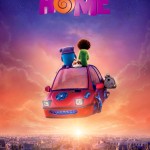 Whether or not they know it, five year olds are not strangers to the art form of dance. They constantly move, play and explore the ways their bodies can travel in space. But how can you challenge a child to express feeling through dance and make artistic decisions in choreographing movement? The answer may lie in colorful pipe cleaners.
Whether or not they know it, five year olds are not strangers to the art form of dance. They constantly move, play and explore the ways their bodies can travel in space. But how can you challenge a child to express feeling through dance and make artistic decisions in choreographing movement? The answer may lie in colorful pipe cleaners.
This past Monday, armed with a bundle of colorful pipe cleaners (or “fuzzy sticks,” as they are referred to in most classrooms), I set out for PS 111 in midtown to lead a pre-show, in-classroom workshop for the upcoming perMformance of Mischief at The New Victory Theater. As a New Vic Education staff member and teaching artist, I travel to schools across New York City and lead pre- and post-show workshops in Pre-K to 12 classrooms. The workshops allow the students to actively explore the art form (in this case, dance) of the show they are about to see on the New Vic stage.
My co-teaching artist, Javier, and I arrive at the school. The tables are pushed aside and the students stand in a circle, waiting to see what these eccentric strangers will do. Without saying a word, I pull out a colorful fuzzy stick and bend it into a “C” shape. Javier immediately shapes his body to physically match the shape of the fuzzy stick. A few students giggle, wondering what will happen next. Without saying a word, Javier gestures to suggest that the students create the shape as well. All of a sudden, I change the shape of the fuzzy stick to a “V.” The students now know the rules of the game and they immediately pose in a way that matches the shape. However, each shape is slightly different in translation; they have just made their first choreographic decisions. 
Throughout the workshop, we encourage the students to make specific physical choices and explore the relationship between the object and their bodies. The result is remarkable – the act of translating the object’s shape to their own bodies unlocks a new freedom and creativity in movement. Soon, the students each get their own fuzzy stick and are asked to make literal shapes (“Turn your fuzzy stick into a square”) and abstract shapes (“Create a shape that represents the emotion of Excitement with your fuzzy stick”). They explore the movement of these shapes, and attempt to mimic this movement in their bodies. In pairs, they create a small human puppet using two fuzzy sticks and a movement phrase for their puppet to perform. Finally, they recreate this movement phrase in their own bodies. In the course of a forty five minute workshop, the students have taken on the role of choreographer, puppeteer and performer.
As a teaching artist, it is amazing for me to watch as the students, who are just becoming aware of their own bodies and the way they move, rehearse and perform dance pieces that they have created. They navigate working as an ensemble, physically executing their own idea, and feeling artistic ownership over their work. Student-centered exploration, or empowering students to work within a structure to artistically create on their own, is one of the guiding principles upon which every New Vic workshop is created.
The experience takes on new meaning when my students come to The New Victory to see a performance (in this case, Mischief) and excitedly exclaim, “We did that!” when they watch the performers on stage. Mischief utilizes colorful foam noodles (a larger version of our fuzzy sticks) that the dancers manipulate, mimic and play with to create a remarkable and fun approach to contemporary dance. A collaboration between a theater company (UK’s Theatre-Rites) and a choreographer (Arthur Pita), it is the first dance piece for family audiences commissioned by the world-renowned dance institution Sadler’s Wells. The combination of puppetry and dance provides the perfect introduction to dance for the youngest audience member. My students bounce out of the theater, ready to create their own dance pieces. Thanks to the performance, and of course the fuzzy sticks, a new generation of artists dance back on to the subway to school.
Jonathan Shmidt is the Assistant Director of Education at the New Victory Theater. He manages the New Victory Education Partnership Program, which provides 30,000 students with access to school-time performances and in-classroom workshops. Jonathan is on the adjunct faculty for the Program in Educational Theatre at New York University. He has collaborated on Theater for Young Audiences initiatives with the Boston Lyric Opera, Theater Offensive and Immediate Medium. Jonathan is the co-founder of YEA: Young Educators in the Arts, a networking group for emerging professionals in Arts Education. He holds a Masters Degree in Educational Theatre from New York University.







 Follow
Follow





Very nice site! cheap viagra
What is truly phenomenal about this is how these guys are taking something as esoteric as dance – particularly choreography – and giving it meaning. It’s tough enough when we aren’t trained in something like dance to speak and understand its language. Imagine how kids feel when they see it and try to comprehend what they see on stage. These guys have demystified it. They’ve taught the children a new language and clearly, it’s understood and replicated not just in what they do and how they react in the workshop, but how they then identify with the movement during a performance. It’s both challenging and respectful to their ages and abilities. Kudos — this is the standard by which artists should teach.
We have nothing like this where we live. What a wonderful opportunity for the kids! Awesome!
I am such a of The New Victory. I find their educational programs to be such a great contribution to our community, and to a young person’s life and cultural development. In the various things we have done there, whether it is watch a show, or participate in a work shop, I have always been nothing but impressed. Great read!